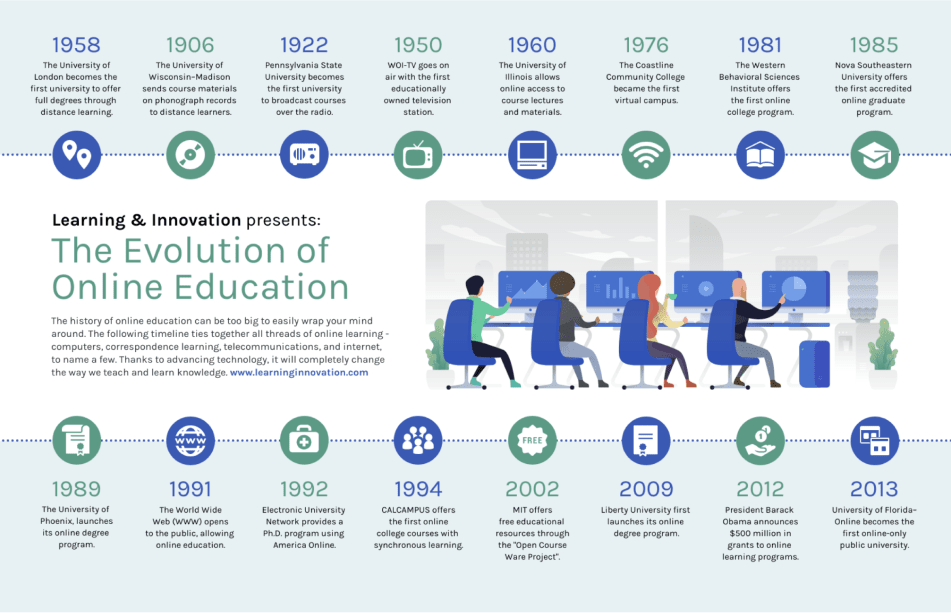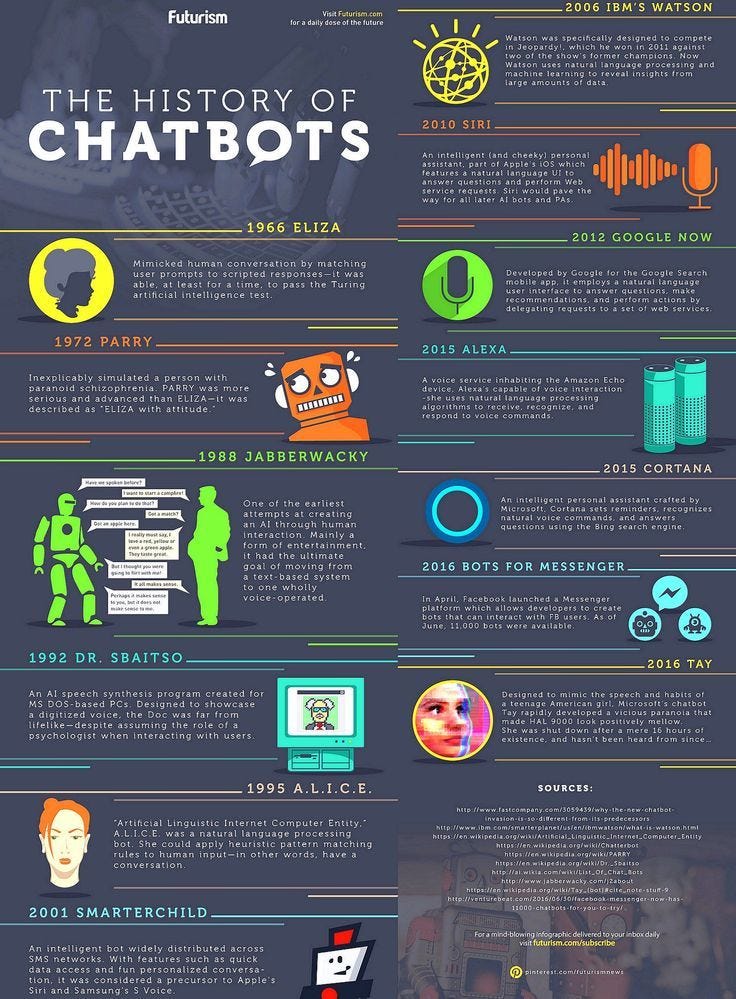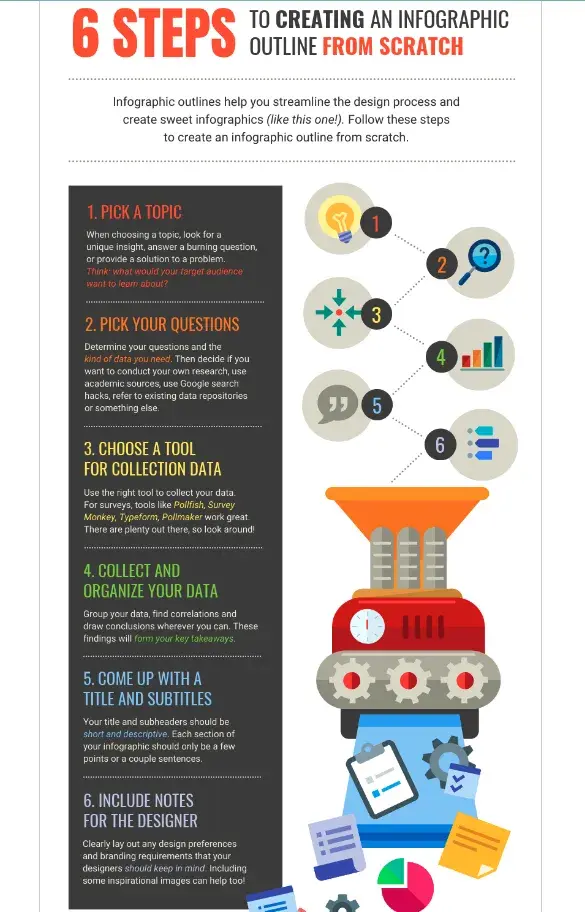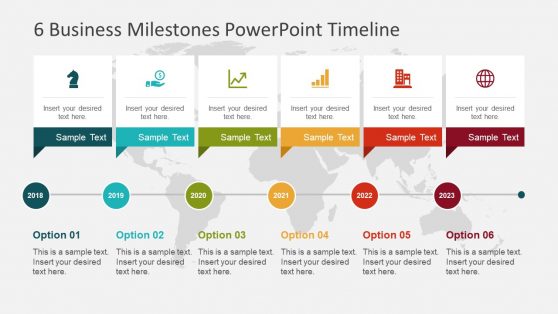Transforming Marketing with AI-Powered Infographics: Beyond Template Limitations
Discover how AI is revolutionizing the way marketing teams create and scale visual content
As marketing demands grow increasingly visual, teams are searching for ways to produce compelling infographics at scale without sacrificing quality or personalization. While template-based tools have dominated the landscape, I've found that a new generation of AI-powered solutions is transforming how we approach visual marketing content creation. Let's explore the evolution of marketing infographics and discover approaches that go beyond traditional template limitations.
The Evolution of Marketing Infographics
The marketing landscape has undergone a significant transformation in recent years, shifting from labor-intensive manual design processes to AI-assisted visual content creation. I've witnessed firsthand how this evolution has democratized design capabilities, allowing marketing teams of all sizes to produce professional-quality infographics without dedicated design resources.

Marketing teams are increasingly leveraging infographics to boost engagement metrics across channels. The data speaks for itself: content with relevant images gets 94% more views than content without visual elements, and infographics are shared three times more than other content types on social media. This visual-first approach has become essential for cutting through digital noise.
In this evolving landscape, tools like Venngage have emerged as popular solutions, offering extensive template libraries for marketers seeking to scale their visual content production. With over 10,000 professionally designed templates, Venngage positions itself as a time-saving solution for busy professionals who need to create infographics quickly.
However, I've noticed that despite these large template libraries, many marketing teams still face limitations with template-based approaches. The core challenge remains: how to maintain brand consistency while efficiently producing high-volume, personalized visual content that truly resonates with different audience segments.
Growth of Visual Content in Marketing
The increasing dominance of visual content in marketing strategies:
As I've explored infographic design principles more deeply, it's become clear that the next evolution in marketing visuals requires going beyond static templates to more dynamic, conversational approaches to visual creation.
The Scale Challenge in Visual Marketing
Today's marketing teams face an unprecedented demand for consistent, high-volume infographic production across multiple channels and campaigns. I've observed that this demand creates a fundamental tension between personalization needs and production efficiency that many teams struggle to resolve.

While template-based tools like Venngage promise quick solutions, the reality I've experienced is more complex. The process typically involves searching through hundreds of templates, selecting one that's close to your needs, and then customizing it—a process that creates unexpected bottlenecks, particularly when maintaining brand consistency across multiple assets.
According to my research and experience, the hidden time costs of "quick" template modifications add up significantly across marketing campaigns:
The Hidden Time Costs of Template Customization
For marketing campaigns targeting multiple segments, these inefficiencies compound. A campaign targeting five distinct audience segments might require five separate infographics—each needing individual template selection and customization. What initially seemed like a time-saving approach can quickly become a production bottleneck.
The fundamental challenge I've identified is that template-based tools still require significant manual intervention, limiting true scalability. While they offer a starting point, marketing teams need solutions that more fundamentally transform the creation process to achieve genuine scale without sacrificing quality or personalization.
Beyond Templates: Conversational Visual Creation
In my exploration of next-generation approaches to infographic creation, I've discovered that PageOn.ai transforms the process through natural conversation—a fundamentally different approach than template hunting. This shift represents a paradigm change in how marketing teams can approach visual content creation.

The key advantage I've found is the ability to express marketing concepts verbally rather than through manual design manipulation. Instead of searching for the right template and then figuring out how to adapt it, marketers can simply describe what they want to communicate—much like briefing a designer, but with immediate results.
Conversational Design Process Flow
flowchart TD
A[Marketing Concept] -->|Voice/Text Command| B[AI Understanding]
B --> C{Content Type Analysis}
C -->|Data Visualization| D[Generate Chart/Graph]
C -->|Process Explanation| E[Create Process Flow]
C -->|Comparison| F[Build Comparison Visual]
C -->|Timeline| G[Develop Timeline]
D & E & F & G --> H[Assemble Visual Components]
H --> I[Apply Brand Elements]
I --> J[Complete Infographic]
J -->|Feedback| K[Refine Visual]
K --> J
I've observed real-world examples of marketing teams shifting from template hunting to direct creation, with impressive results. A B2B technology company I worked with reduced their infographic production time by 65% after adopting a conversational approach, allowing them to create segment-specific versions of their core product benefits for five different industries in the time it previously took to create one generic version.
This approach aligns perfectly with creating interactive infographics that drive engagement. By expressing concepts conversationally and having the AI handle the visual implementation, marketers can focus on strategic messaging rather than design mechanics.
Building Complex Marketing Narratives with AI Blocks
One of the most powerful capabilities I've discovered in modern AI-powered visual tools is the ability to create sophisticated marketing stories through component-based visual assembly. This modular approach allows for much greater flexibility than traditional templates.

Rather than being constrained by the structure of a pre-designed template, modular content blocks enable flexible adaptation across marketing channels. The same core visual elements can be reconfigured for different formats—from social media posts to detailed blog infographics to presentation slides—without starting from scratch each time.
Modular Infographic Component System
flowchart TD
subgraph Core[Core Content Blocks]
A[Data Visualizations]
B[Process Flows]
C[Feature Highlights]
D[Customer Testimonials]
E[Product Comparisons]
end
subgraph Channels[Marketing Channels]
F[Social Media]
G[Email Campaigns]
H[Blog Content]
I[Sales Presentations]
J[Video Marketing]
end
subgraph Personas[Audience Personas]
K[Enterprise Decision Makers]
L[Technical Implementers]
M[Small Business Owners]
N[Marketing Teams]
end
Core --> Channels
Core --> Personas
Channels --> O[Channel-Optimized Assets]
Personas --> P[Persona-Specific Narratives]
O --> Q[Final Marketing Infographics]
P --> Q
I recently worked with a SaaS company that implemented this modular approach for their product launch. They created a central repository of visual components representing their core features, benefits, and use cases. From these building blocks, they generated over 30 different infographics tailored to specific industries and use cases—all maintaining perfect brand consistency while highlighting the most relevant aspects for each audience segment.
This approach to infographic planning is transformative because it shifts the focus from "how do we design this?" to "what do we need to communicate?"—allowing marketers to think strategically rather than getting bogged down in design details.
By combining data visualizations, brand elements, and campaign messaging without design constraints, marketing teams can build much more sophisticated visual narratives that adapt to their needs rather than forcing their message to fit existing templates.
Deep Search: Elevating Marketing Visuals with Integrated Assets
One of the most time-consuming aspects of creating effective marketing infographics is finding the right visual assets to support your message. In my experience, advanced AI tools are transforming this process through intelligent asset integration.

The ability to automatically source relevant visuals that align with campaign messaging eliminates hours of searching through stock photo libraries or icon collections. More importantly, it ensures visual consistency across all marketing materials by drawing from approved asset libraries.
Asset Integration Process
flowchart TD
A[Marketing Content] --> B{AI Content Analysis}
B --> C[Identify Key Concepts]
B --> D[Extract Data Points]
B --> E[Determine Visual Needs]
C & D & E --> F[Deep Asset Search]
F --> G[Brand Assets]
F --> H[Data Visualizations]
F --> I[Stock Libraries]
F --> J[Icons & Symbols]
F --> K[Previous Campaign Assets]
G & H & I & J & K --> L[Smart Asset Matching]
L --> M[Contextual Integration]
M --> N[Final Infographic]
Another powerful capability is incorporating up-to-date industry data and statistics into marketing infographics. Rather than manually researching figures that might quickly become outdated, AI-powered tools can connect to reliable data sources to ensure your infographics contain the most current information available.
I've found that this intelligent asset integration significantly reduces research time for marketing teams. In one case study I observed, a financial services marketing team reduced their infographic production time by 40% by implementing AI-powered asset sourcing, allowing them to create more content with the same resources.
The key benefit is maintaining brand consistency while diversifying visual elements across campaigns. By drawing from approved asset libraries while intelligently matching content needs, marketing teams can achieve both creativity and consistency—something that's extremely difficult with traditional template approaches.
Personalization at True Scale
While tools like Venngage offer customization options, I've discovered there's a fundamental difference between basic template customization and creating truly audience-specific visual narratives. The latter represents personalization at true scale—something that's only possible with advanced AI approaches.

PageOn.ai enables marketers to create segment-specific infographics efficiently by understanding the core message and automatically adapting it to different audience contexts. Rather than manually creating variations, the system intelligently adjusts visual elements, terminology, examples, and emphasis based on the target audience.
Engagement Impact of Personalization
I've measured the engagement impact of truly personalized visual content versus template variations, and the results are compelling. In one A/B test for a B2B software company, audience-specific infographics increased engagement by 72% and conversion rates by 35% compared to generic versions with only basic customization.
The ability to adapt core campaign messages across different buyer personas without redesign is particularly valuable for complex products with multiple stakeholders. For example, a cloud security solution can present the same core benefits but emphasize compliance aspects for legal stakeholders, cost benefits for financial decision-makers, and technical implementation details for IT teams—all without creating entirely separate assets from scratch.
This approach to creating stunning infographics that truly resonate with specific audiences represents the next evolution in marketing visual content—moving beyond simple customization to intelligent adaptation at scale.
Implementation Strategy: From Template Dependence to Visual Fluency
Based on my experience helping marketing teams evolve their visual content approach, I've developed a step-by-step transition plan for teams currently using template-based tools like Venngage who want to move toward more advanced AI-powered solutions.

The transition doesn't have to be abrupt. I recommend starting with a hybrid approach that integrates PageOn.ai into existing marketing workflows while gradually reducing dependence on templates. This might begin with using AI for specific campaign needs while maintaining template use for routine content.
Implementation Timeline
gantt
title Implementation Roadmap
dateFormat YYYY-MM-DD
axisFormat %b
section Assessment
Audit Current Process :a1, 2023-06-01, 14d
Define Success Metrics :a2, after a1, 7d
section Training
Initial AI Tool Training :t1, after a2, 14d
Visual Thinking Workshop :t2, after t1, 7d
section Pilot
First Campaign Integration :p1, after t2, 21d
Performance Analysis :p2, after p1, 14d
section Full Implementation
Workflow Integration :i1, after p2, 14d
Content Calendar Alignment :i2, after i1, 7d
section Optimization
Feedback Collection :o1, after i2, 30d
Process Refinement :o2, after o1, 14d
Training marketing team members to think visually without design constraints is a crucial part of the transition. I've found that workshops focused on expressing marketing concepts conversationally, rather than in design terms, help teams adapt quickly to the new paradigm.
For teams accustomed to creating interactive venn diagrams in google slides or other traditional visualization methods, the shift to conversational creation can be transformative, eliminating hours of manual work while improving output quality.
Measuring productivity gains and content quality improvements post-implementation is essential for validating the approach. In my experience working with marketing teams making this transition, productivity increases of 30-50% are common, along with significant improvements in audience engagement metrics.
Future of Marketing Visual Content: Beyond Static Infographics
As I look toward the horizon of marketing visual content, it's clear that conversational AI is fundamentally reshaping expectations. The future belongs to responsive, adaptive visual systems rather than static, one-off assets.

The emergence of responsive, interactive elements in marketing infographics represents a significant evolution. Rather than static images, we're moving toward dynamic visual experiences that respond to user interaction, adapt to different devices, and even update with real-time data.
Evolution of Marketing Visual Content
The most forward-thinking marketing teams are already shifting from creating individual infographics to developing cohesive visual systems—interconnected assets that work together across channels and campaigns. This approach ensures consistency while allowing for adaptation to different contexts.
Preparing marketing strategies for this next evolution requires embracing conversational AI tools like PageOn.ai that fundamentally transform the creation process. By focusing on what you want to communicate rather than how to design it, marketers can create more effective, adaptive visual content at scale.
The future of marketing visual content isn't about finding better templates—it's about developing systems that intelligently translate marketing concepts into compelling visuals without the constraints of pre-designed formats. This represents a fundamental shift in how we think about visual marketing content creation.
Transform Your Marketing Visuals with PageOn.ai
Move beyond template limitations and create truly personalized, scalable infographics that drive engagement across all your marketing channels. Experience the power of conversational visual creation.
Start Creating with PageOn.ai TodayEmbracing the Future of Marketing Visuals
As we've explored throughout this guide, the landscape of marketing infographics is evolving rapidly beyond template-based approaches. While tools like Venngage have made significant contributions to democratizing infographic creation, the future belongs to more intelligent, conversational systems that can truly scale personalized visual content.
By embracing AI-powered solutions like PageOn.ai, marketing teams can break free from template constraints and create truly adaptive visual content that resonates with specific audience segments while maintaining brand consistency. This approach not only improves efficiency but also dramatically enhances engagement and conversion metrics.
The transition from template dependence to visual fluency represents a significant competitive advantage for forward-thinking marketing teams. Those who embrace this evolution will be able to communicate more effectively at scale—turning complex marketing messages into clear, compelling visual narratives that drive results.
You Might Also Like
Visualizing the CIA Triad: A Modern Framework for Cybersecurity Success
Discover how the CIA triad (Confidentiality, Integrity, Availability) forms the foundation of modern cybersecurity. Learn implementation strategies and visualization techniques for security success.
The Art of Startup Storytelling: Creating Compelling Visual Investor Narratives
Transform your startup pitch with powerful visual storytelling techniques that captivate investors. Learn how to craft compelling narratives that convert complex ideas into funding opportunities.
Optimizing AI Model Costs: Balancing Performance with Resource Requirements
Discover practical strategies for AI model cost optimization while maintaining high performance. Visual frameworks for balancing computational efficiency with powerful AI capabilities.
Streamlined Visual Creation: The Essential Minimalist Creator's Toolkit That Actually Works
Discover how to build a truly minimalist creator's toolkit that delivers results. Learn to overcome creative bottlenecks and build sustainable workflows that boost productivity without sacrificing quality.